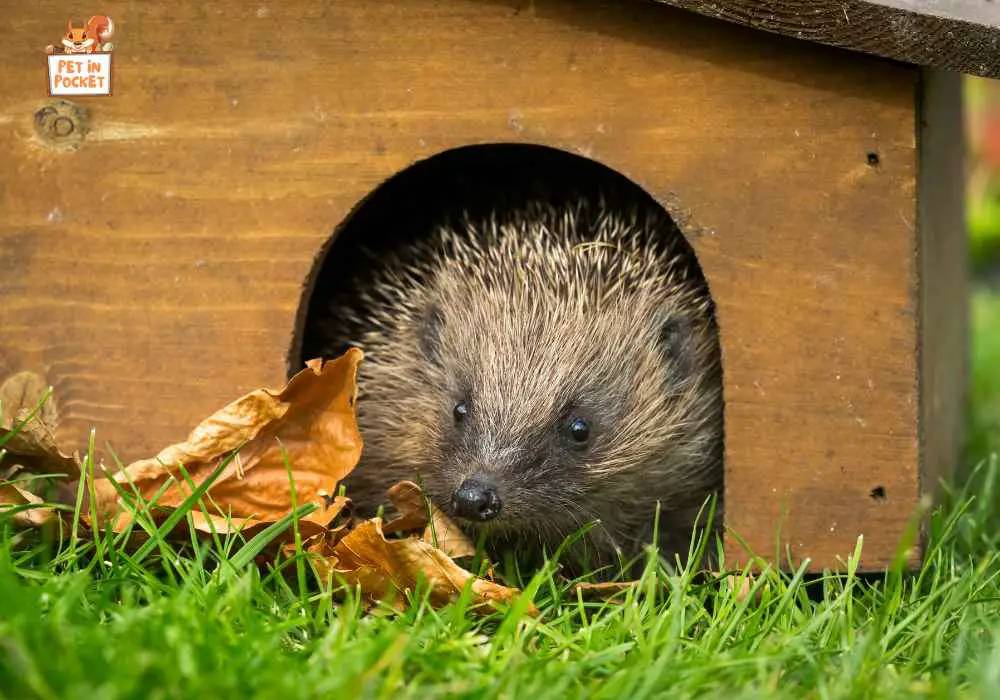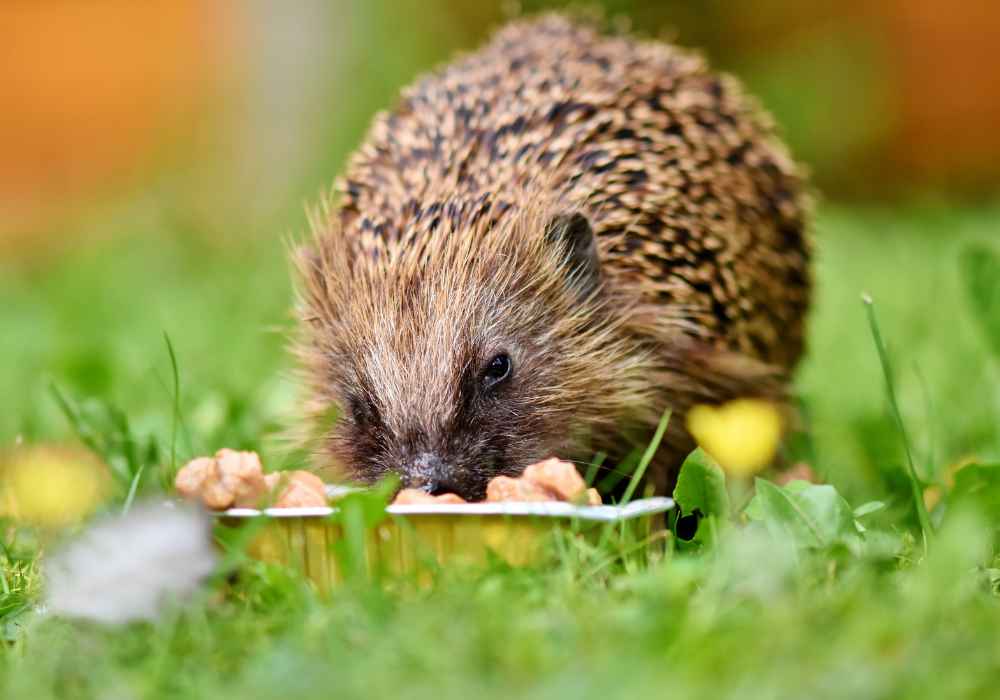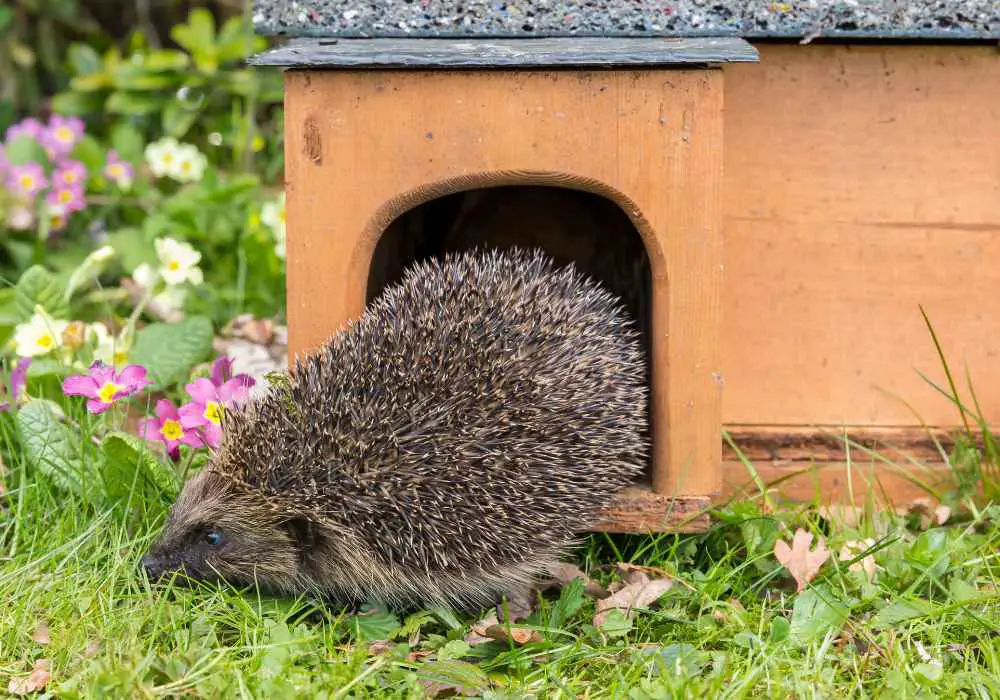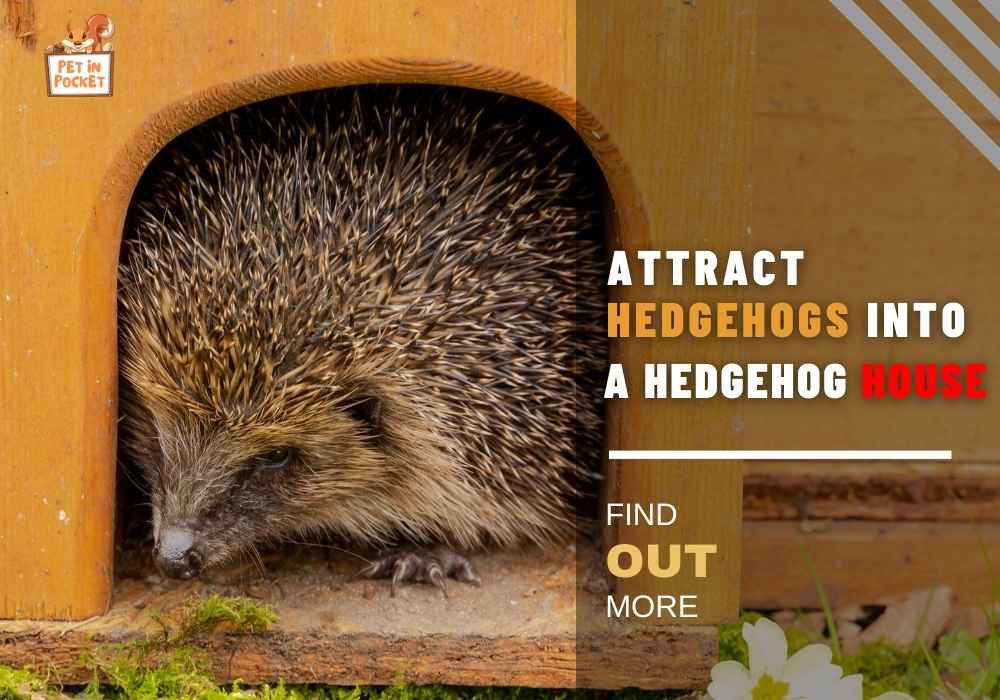As the spring hits, hedgehogs start taking tours in our gardens for food and shelter. Unfortunately, many do not know exactly how to make these visits more welcoming. So, let us share some tips on how to attract hedgehogs into a hedgehog house kept in your garden.
First, make a tiny entrance for your little friend in the fence. Next, set up a feeding station with a freshwater source to make the hedgehog stay longer. Finally, build a house in the garden corner and lay the bottom with dry leaves. This cozy bed and the meals will lure the hedgehog into this house.
Need more details? Keep reading.
Table of Contents
How to Encourage A Hedgehogs To Use A Hedgehog House in Your Garden
We understand your limitations in having a pet hedgehog. But don’t worry. You can still enjoy the thrill of caring for these prickly pigs by opening your garden for them.
In rural areas, hedgehogs often come to visit neighborhood gardens. This is more common in the spring after these quill balls wake up for hibernation. Hence, we encourage countryside homeowners to make their gardens hedgehog-friendly.
So, how to you attract hedgehogs into a hedgehog house on your property? Here are some expert tips for you:
1. Build A Hedgehog Highway

We put fancy fences around our gardens that stand as an entry barrier for the hedgehogs. Of course, knocking off these hedges makes no sense. Instead, we suggest making a tiny hole in the fence to clear the passage for the prickly balls.
Mammal Society UK confirms that hedgehogs travel 1 to 2 km on average per night. So, talk your neighbors into punching tiny holes in their fences, too. This will allow the hedgehogs to move from one yard to another without hassle.
Now, don’t worry about other animals breaking into your property. The hedgehog holes are too tight for others to pass.
Bonus Tips: Smoothen the edge after punching a hole in your fence. Otherwise, the creature will get injured while visiting your garden.
2. Bring Some Logs for The Hogs
Can you imagine how attractive the log pile will be for the wild hedgehogs? Yorkshire Wildlife Trust confirms that fallen trees make these animals relaxed, and so they take shelter there.
Obviously, we can barely manage space for log piles. That is why we have added three logs in different corners of our garden. The log piles serve several benefits. For the starter, these can lure hedgehogs into their new home in your yard.
Besides, they also boost the garden ecosystem. Decaying wood entices spiders, beetles, frogs, and many insects. That means the guest hedgehog can feast on these fresh snacks if they make a stay.
3. Go for Water Stations
Building water sources beside your hedgehog house is an excellent way to attract the animal into the new home. Wildlife Online suggests that wild hedgehogs easily get drawn to water bodies. They will stop by either for a drink or a cool shower.
What can we use as water sources? Many keepers use shallow dishes and bowls to offer the creatures water. Commercial oasis baths with gradual groves to the bottom are also available. The steps support hedgehogs and prevent drowning.
We have set up a pond in the garden near our hedgehog habitats. Our pond is a house to many insects, feeder fishes, snails, and frogs. Hence, the quill balls get a wild vibe while staying beside the water station.
Hedgehogs are very particular about hygiene. Therefore, maintaining the cleanliness of the water body is crucial. Also, do not forget to replace the dirty water with fresh water daily.
One more thing. We advise against building the water station directly under the sun. Instead, place the water bowl under a shade so the hedgehogs can drink and bathe in cool water.
Bonus Tips: According to Cambridge Hedgehogs, this wild species can swim but can not survive in the water for too long. Deep pond water might drown the hedgehogs. We suggest placing ramps, logs, and smooth stones inside and around the pond to reduce the risk of an accident.
4. Arrange Proper Meals

Offering meals will tick mark all the daily necessities of the hedgehogs. Hence, there is no chance that they will leave your garden.
Hedgehog Street states that wild quill balls are more into mealworms, beetles, caterpillars, slugs, earwigs, and other worms. Among them, slugs are their all-time favorite. We believe in growing natural gardens. So, slugs, insects, and worms are available in our yard.
You may not have noticed. But these prickly pigs often love munching on grass and weeds. This is why we discourage everyone from using pesticides in the garden. Ingesting chemicals will only make the hedgehogs sick.
Unfortunately, our gardens can not just fulfill the energy requirement of the hedgehogs. That is why we have installed feeding stations between the water body and the house. We refill these feeders with commercial A-grade hedgehog foods.
Yes, there is a risk that other animals may feast on that food before the quill balls even get a chance. To avoid such risks, we use a lid with only hedgehog-sized holes to cover the containers. This way, only our prickly pigs can enjoy the meals.
5. Finally, Let’s Build The Main Home

Logs, a water body, and a feeding station are enough to encourage these prickly balls to make a home in your garden. But of course, we can help them to have a more welcoming stay. The trick here is to build a comfortable home.
We recommend buying commercial hedgehog homes. They are well-designed and sturdy. However, you can also use untreated wood and make an enclosure for them.
Many people attach the feeding station to the house. However, our experience says that hedgehogs do not like to eat where they stay. Hence, maintain a moderate distance between the feeding stations and the home.
When water and food are available, there is a high chance that hedgehogs will take shelter in that home. Ark Wildlife UK suggests laying out the bottom with dry leaves, hays, grass, and pocket pet straws. This bedding is cozy and comfortable for these wild quill balls all seasons.
However, leaving room for more materials in the house is important. The hedgehog might want to collect some bedding of its own. We put soil packs, debris, and dry leaf dumps around the main house. This encourages the creature to take shelter in your garden.
Bonus Tips:
The DIY hedgehog house size should be 35 x 28 x 20 cm in dimension. You can make two chambers, one for the entrance and the other for sleeping. The gate should not be more than 10 x 10 cm.
Where to Put The Hedgehog House to Attract The Hedgehogs?
A wrong position for the hedgehog’s house, and the creature will simply not pay you a visit. Here is what to remember while bargaining for the location:
| Hedgehogs hate the cool breeze. Hence, south-facing or west-facing corners are best for the home. |
| These quill balls seek protection against predators like badgers and foxes. It is better to make the entrance small and grow bushes in front of the house. |
| Hedgehogs hate extreme heat. You should choose a shady corner to set up the home. |
| Finally, put the enclosure away from the chaos. These creatures come out after the dark and stroll in the garden. Human encounters will make them freak out and leave the garden. |
Conclusion
Following our tips will surely encourage a hedgehog to take shelter in the hedgehog house in your garden. However, sometimes, these animals just sleep in the leaf dump, bonfire mound, or inside the lawn mower as they find it more cozy. So, do not fork into the leaves or light the bonfire without checking for a hedgehog.
FAQ
How do you attract hedgehogs?
Making the garden accessible is the first step. Next, leave freshwater and meals for the hedgehogs. Finally, a shelter for the creatures should be built in one corner of the garden.
What do you put inside a hedgehog house?
You do not necessarily have to decorate the wild hedgehog houses. Putting a bedding with dry leaves, hays, and grass will be fine. Generally, these prickly balls love to forage and collect materials for their home.
How do I know if a hedgehog is using the hedgehog house?
Investing in a night camera is the best way to detect hedgehogs in your property. People often set twigs at the house entrance and observe its movement. You can also look for hedgehog poop to confirm its presence.
How big is a DIY hedgehog house?
An ideal size for a guest hedgehog house is 35 x 28 x 20 cm with an entrance of 10 x 10 cm. You can customize the size and design of the enclosure. Building a small home is recommended.
How do you make a natural hedgehog house?
The log piles and dry leaf dumps make excellent natural houses for hedgehogs. You can also DIY the home with untreated timbers. Commercial hedgehog houses made with wood are also popular.






Leave a Reply